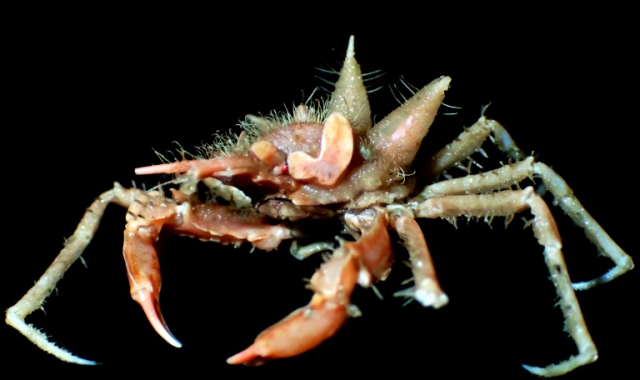
“This is a part of the Indian Ocean that has been never been sampled for deep-sea animals so we really didn’t know what to find,” said Peter Ng, a crab expert and head of the Lee Kong Chian National History Museum at NUS. South Java Deep Sea Biodiversity Expedition 2018 – South Java Deep Sea Biodiversity Expedition 2018/AFP
A hermit crab, a shiny-eyed shrimp and a crab with fuzzy spines are among over a dozen new species discovered in a deep-sea expedition off the Indonesian island of Java, scientists said.
The team from the National University of Singapore (NUS) and the Indonesian Institute of Sciences (LIPI) carried out the expedition for 14 days between March and early April.
The area covered included a long stretch of the Indian Ocean off Java’s southern coast as well as the Sunda Strait that separates the island from Sumatra.
“This is a part of the Indian Ocean that has been never been sampled for deep-sea animals so we really didn’t know what to find,” said Peter Ng, a crab expert and head of the Lee Kong Chian Natural History Museum at NUS.
“We were very surprised by the findings,” he told AFP on Thursday, adding that the team had expected to discover creatures from the Indian Ocean and the surrounding areas already known to scientists.
But the discovery of species entirely new to science “tells us that there are things happening in that part of Indonesia that we don’t know,” said Ng, who co-led the expedition.
The researchers examined 63 sites as they sailed from Jakarta to Cilacap town in southern Java and back.
Three new species of spider crabs were discovered during the expedition, the scientists said in a statement.
One of them had a plate protecting its eyes which resembled oversized ears while another was bright orange in color.
Another discovery was a new species of hermit crab with bright green eyes, according to Indonesian scientist Dwi Listyo Rahayu, also a crab expert and the expedition’s co-leader.
One new species of shrimp had shiny eyes that reflect light, the scientists said.
Ng, the NUS professor, said the scientists will carry out a detailed study of the more than 12,000 creatures from 800 species they had picked up on the expedition and publish their findings in 2020.
They expect to discover more new species as they go along, he said.
The reason they immediately identified the new species of crabs, prawns and lobsters is that the scientists involved are experts in this field, he added. AB
RELATED STORIES:
Green ‘mohawk turtle’ added to list of endangered reptiles
Female lion with a mane has died at Oklahoma City Zoo
A new concern for African vultures: Bullet lead in carrion